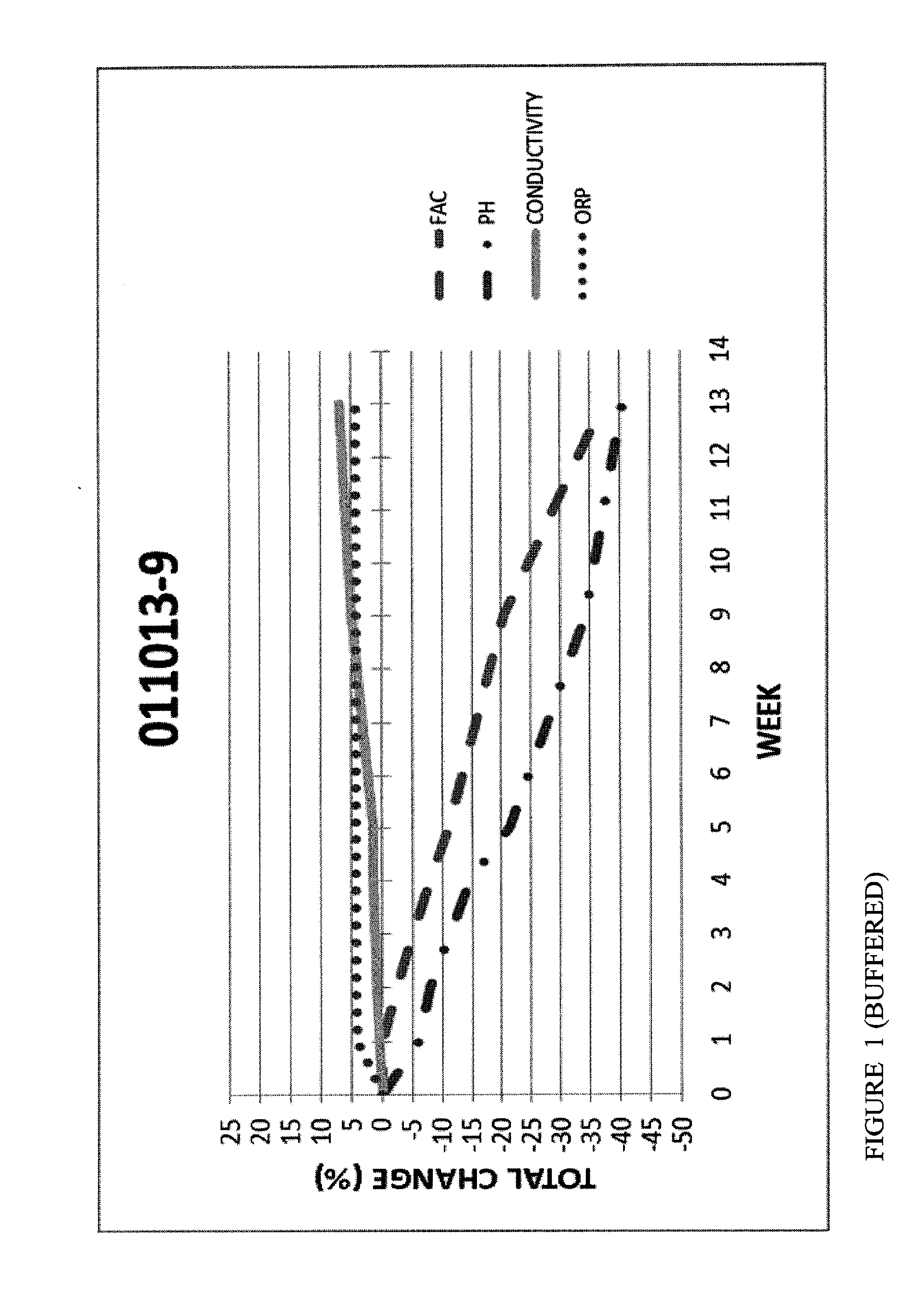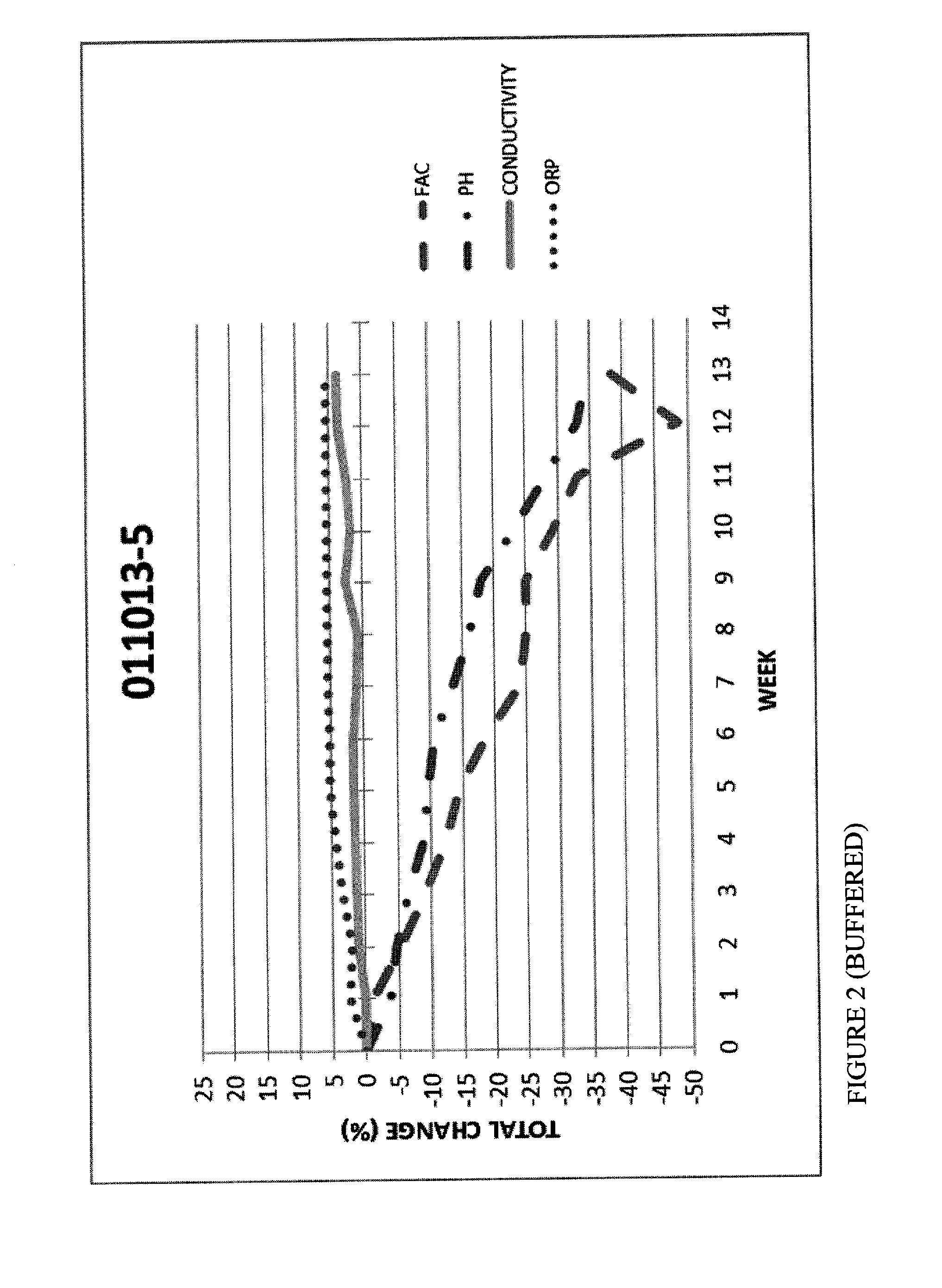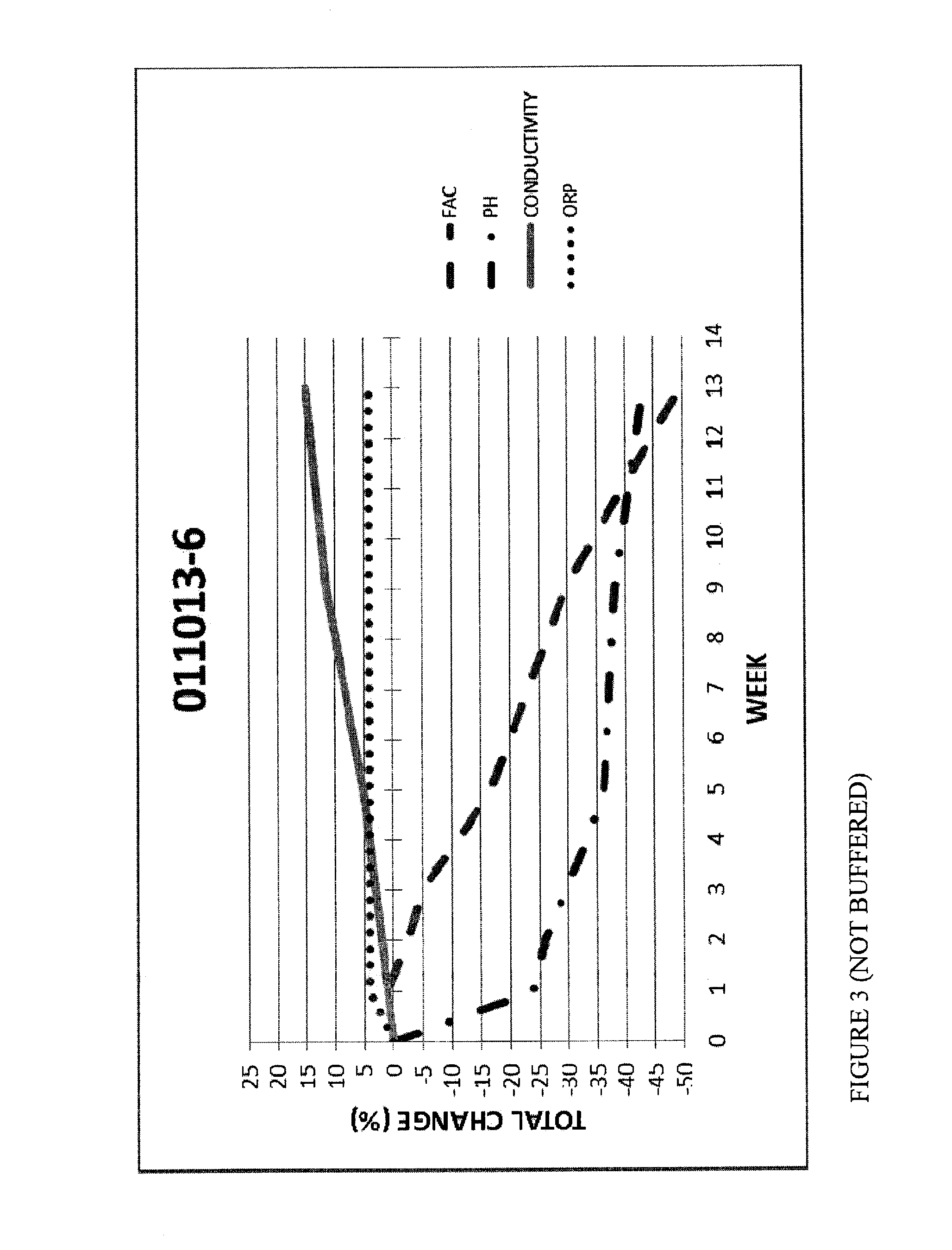METHOD FOR STABILIZING AN ELECTROCHEMICALLY GENERATED SANITIZING SOLUTION HAVING A PREDETERMINED LEVEL OF FREE AVAILABLE CHLORINE AND pH
a technology of electrochemical generation and stabilization, which is applied in the direction of biocide, animal repellents, drug compositions, etc., can solve the problems of limited commercial use, pain and burning limited stability of hypochlorous acid solutions, etc., and achieve convenient packaging for sale
- Summary
- Abstract
- Description
- Claims
- Application Information
AI Technical Summary
Benefits of technology
Problems solved by technology
Method used
Image
Examples
example 1
Accelerated Stability Study: Comparison of Stability of HOCL Solutions with or without DIC
[0072]FIGS. 1 and 2 are graphs with FAC, pH, ORP and Conductivity measurements for Hypochlorous Acid wound treatment solutions as a function of time under accelerated stability conditions (40 degrees Celsius at 75% relative humidity).
[0073]FIGS. 3 and 4 are graphs with FAC, pH, ORP and Conductivity measurements for Hypochlorous Acid wound treatment solutions as a function of time under accelerated stability conditions (40 degrees Celsius at 75% relative humidity).
[0074]In an attempt to stabilize the pH and Conductivity, the samples in FIGS. 1 and 2 were buffered with a blend of sodium phosphate and polyphosphates. The results show that the pH of the samples containing a buffer were more stable (40% loss in 12 weeks) samples. FAC of the buffered samples were more stable (40% loss).
[0075]The stability of the stabilized solution as a function of time was tested. Hypochlorous Acid was produced by e...
example 2
Ambient Stability Study: Comparison of Stability of HOCL Solutions with or without DIC
[0079]The stability of the stabilized solution as a function of time was tested. Hypochlorous Acid was produced by electrochemical treatment of a brine solution. The solution had a pH of 5.5 to 6.5, a conductivity of approximately 1250 uS, and Osmolarity of less than 50 Osm / L. and 200 to 250 ppm of FAC. This solution was packaged in HDPE 5 gallon jerry cans, 100 liter drums and 1000 liter bulk-containers and stored at ambient temperature. The biocidal activity and stability of the solution as a function of time was tested by measuring FAC, pH, ORP, Conductivity and Osmolarity content in unsealed test bottles over a period of 26 weeks.
[0080]FIG. 5 is a graph with FAC, pH, ORP, Conductivity and Osmolarity measurements for Hypochlorous Acid wound treatment solutions as a function of time under normal storage conditions (ambient temperature).
[0081]FIG. 6 is a graph with FAC, pH, ORP, Conductivity and O...
example 3
Microbial Efficacy Study: Comparison of Antimicrobial Properties of HOCL Solutions with or without DIC
[0084]Three different batches comprising a buffered electrochemical Hypochlorous Acid solution with a targeted FAC of 250 ppm and 3 different batches comprising a non-buffered electrochemical Hypochlorous Acid solution with a targeted FAC of 250 ppm were produced. Samples of the buffered and non-buffered batches were analyzed to determine and compare the efficacy of buffered and non-buffered Hypochlorous Acid solutions.
[0085]Two efficacy tests were conducted for each sample.[0086]a) Validation of Microbial Recovery: the purpose of this study was to determine the ability to inactivate the bacteriostatic properties of the HOCL solution[0087]b) Kill Time evaluation: the purpose of this study is to assess if the HOCL solution is bacteriostatic against Pseudomonas aeruginosa at least through 5 minutes.
[0088]FIG. 7 shows the efficacy of stabilized electrochemically HOCL solution (buffered...
PUM
 Login to View More
Login to View More Abstract
Description
Claims
Application Information
 Login to View More
Login to View More - R&D
- Intellectual Property
- Life Sciences
- Materials
- Tech Scout
- Unparalleled Data Quality
- Higher Quality Content
- 60% Fewer Hallucinations
Browse by: Latest US Patents, China's latest patents, Technical Efficacy Thesaurus, Application Domain, Technology Topic, Popular Technical Reports.
© 2025 PatSnap. All rights reserved.Legal|Privacy policy|Modern Slavery Act Transparency Statement|Sitemap|About US| Contact US: help@patsnap.com



